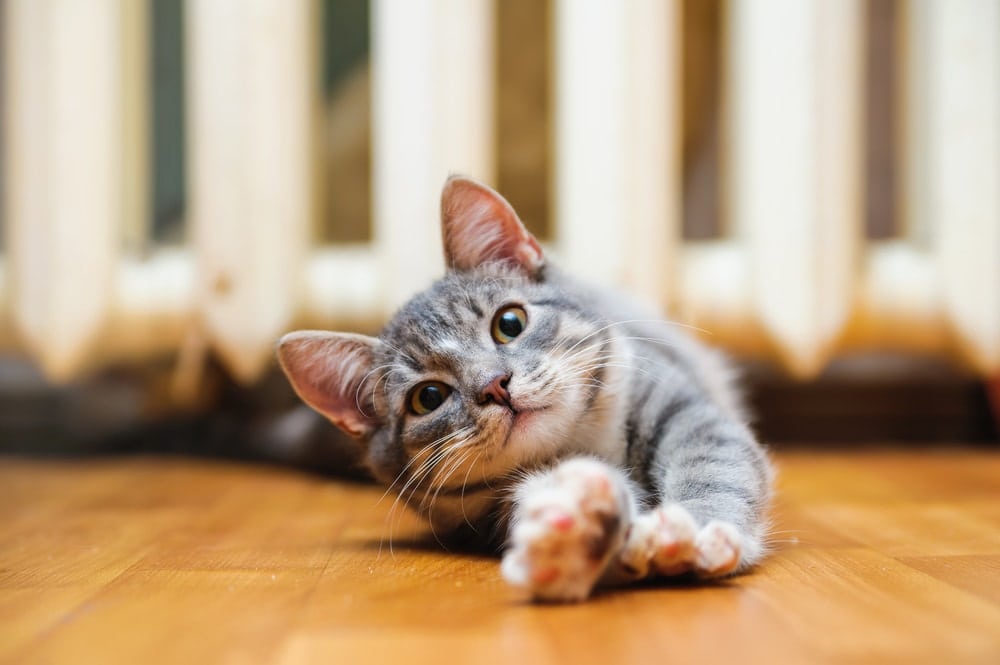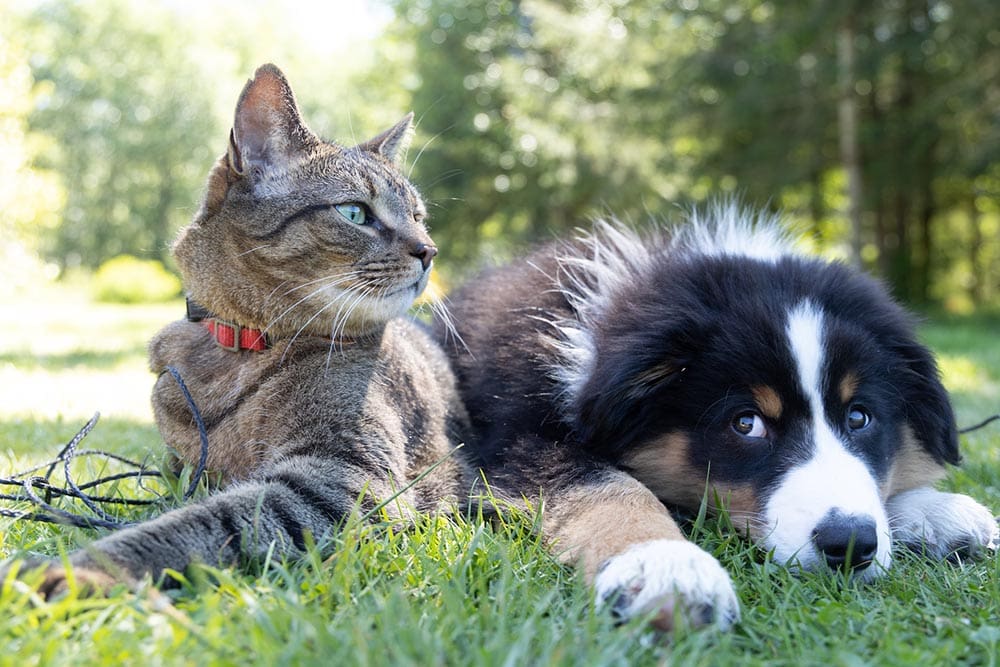How to Cool Down Your Cat: Summer Safety Tips & How To Prevent Overheating

Updated on

When people get overheated, there are some obvious signs: sweating, feeling fatigued or dizzy, increase in temperature. People can also tell others if they are feeling overheated. But with animals, it is a bit harder—especially with cats. If you want to know how to tell if your cat is overheating and how to cool them down, read on.
Tips for Telling if Your Cat Is Overheating
Before you pull out the stops to cool down your cat, it’s best to know what signs cats give that they are too hot and how to tell if your cat is in danger.
- Your cat will probably be less active than normal and seek out shady and cool spots on hot days. They might drink more water to cool down. These are all normal ways that your cat regulates her body temperature.
- If your cat is struggling to stay cool, you’ll start to see panting and sweaty feet. Your cat might also go from less active to lethargic or start grooming compulsively. On the other hand, your cat might become restless as she looks for a cool place to sit. These are signs that your cat needs more help to get cool than they have now.
- If your cat doesn’t get the help she needs, she might start experiencing heat exhaustion or heatstroke. According to PetMD, common signs of heatstroke include rapid pulse or breathing, reddened tongue or gums, vomiting, lethargy, stumbling or difficulty walking, and raised temperatures1. If your cat has any of these symptoms, PetMD recommends misting your cat with cool (not cold) water, letting her drink as much as possible, and seeking immediate vet care.
How to Keep Your Cat Cool to Prevent Overheating
1. Give Access to Water and Shade
The most important way to keep your cat cool is to give them access to plenty of water and shade. Make sure that your cat has clean water that is refreshed regularly. On a hot day, your cat will likely drink more to cool down. Shade, both indoors and outdoors, is also vital for avoiding heat exhaustion.
2. Keep Your House Cool
A cool environment will be good for everyone, including your cat. Aside from using air conditioning, there are lots of ways to keep your house from overheating. You can close blinds to block out the sun and crack windows at night to let cool air in. Another tip is to avoid using your oven until after the hottest part of the day has passed. If you haven’t switched away from incandescent light bulbs yet, give it a try—not only are CFL and LED bulbs more energy-efficient, but they also give off less heat.
3. Groom Often
Matted and tangled fur traps heat, so frequent grooming will help keep your cat cool. Grooming also removes excess fur, which is especially important at the beginning of summer when your cat will naturally be losing her winter coat. If your cat has especially long hair, you can consider getting a professional trim over the summer.

4. Elevate Your Cat’s Bed
If your cat has a favorite place to sleep, consider raising it off the floor on a pallet or risers. A few inches of space between the bed and the floor allow air to circulate freely. You can also buy a hammock-style or window-mounted bed for your cat that serves the same purpose. Just don’t hang your bed from a sunny window, or else you’ll get an unintentional greenhouse effect.
5. Give Damp Washcloth Cuddles
Cats don’t normally like water but stroking your cat gently with a damp washcloth can be a good way to cool them down in the summer. As the water evaporates from your cat’s fur, it will cool your kitty down.
6. Offer Ice
Giving your cat the option of ice water is a great way to keep them cool in the summer. The cool water will be even more refreshing than room-temperature water. You can also put an ice pack or frozen water bottle in your cat’s space to lower the temperature of the room. This works best in smaller rooms, but it can be effective in large spaces too.

7. Break Out the Box Fans
A box fan can create a cooling breeze if properly used. You can place an ice pack or a damp towel behind a box fan to create cool air, or you can place the fan so that it’s bringing air from a cooler part of your home to a warmer part.
8. Avoid Unsafe Cooling Methods
Although there are many safe ways to keep your cat cool, there are also unsafe options. Cooling gels and chemical cooling packs are safe for humans, but many of them contain chemicals that are toxic to cats, so they are best avoided. Make sure your cat has the option to walk away from cooling fans, air conditioning vents, and anything else if she gets too cool. Finally, watch your cat closely for signs that your cooling isn’t enough. If you start to see signs of heatstroke, take your cat in for vet care right away.
Final Thoughts
It can be scary if your cat overheats, but we hope this article has provided some information about what you can do to help your feline friend. Prevention is the best medicine, so it is always a good idea to make sure your cat is not in a place where she can get too hot or overheated.
Related Reads:
Featured Image Credit: Kadres, Pixabay













